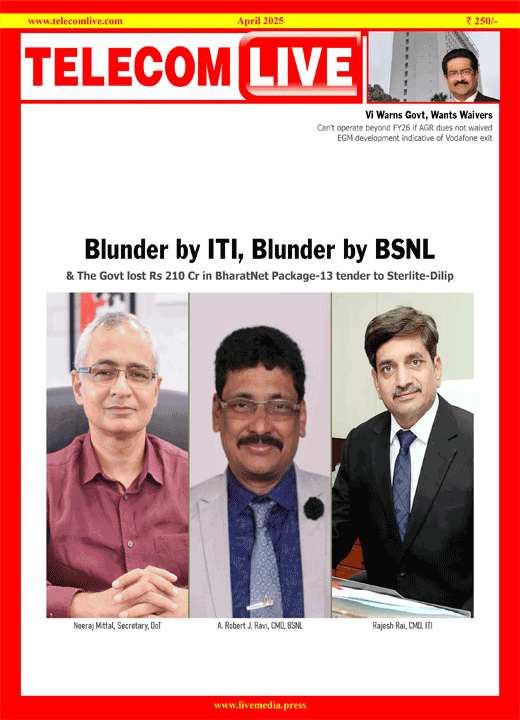Tech players say govt to lose Rs 2 trillion if WiFi band not opened up
With telcos unable to monetise 5G, industry experts have said that the absence of possibilities to monetise might lead to a potential revenue loss of Rs 2 trillion for the government in the coming 5G spectrum auctions. This because the telecom operators are not expected to bid for additional 5G spectrum till the time they start getting returns on the investments already made by them to rollout 5G networks.
The potential loss, however, can be avoided if the government delicenses the 1,200 MHz spectrum in the 6 GHz band for use of Wi-Fi, experts said.
The reason why spectrum in the 6 GHz band should be delicensed and the same will complement 5G, can be attributed to its potential for providing strong in-house connectivity using 5G network, according to a paper by Parag Kar, an independent spectrum expert and former former vice president of government affairs for India and South Asia at Qualcomm.
TV Ramachandran, president of Broadband India Forum (BIF) also echoed Kar’s views on delicensing the 6 GHz spectrum, not only for 5G monetisation but also for India’s 6G development plans.
“The band (6 GHz) is essential for modern applications like AR (augmented reality), VR (virtual reality), and sophisticated gaming necessitate the broad carriers available in the 6 GHz licence-exempt bands, and the same is unachievable in the existing 2.4 & 5 GHz licence-exempt spectrum,” Ramachandran said in a recent letter to DoT secretary Neeraj Mittal. The letter also cites Kar’s paper on the subject.
Simply put, currently 5G fixed wireless access (FWA) is seen as the only solution on which telcos can bank on and start recouping some of their 5G investments. The FWA solution, which is capable of providing fiber-like speeds at homes or offices, was launched by the telcos as AirFiber recently. Experts said, even by using FWA, telcos will not be able to give meaningful 5G experience to users inside their homes at present, owing to legacy routers that support 2.4 GHz and 5 GHz Wi-Fi technologies. FWA will be able to provide better speeds inside homes, only when there is availability of 6 GHz spectrum band that too delicensed for Wi-Fi.
Without delicencing of 6 GHz band for Wi-Fi, operators will not be able to harness the potential of frequencies in the 3300 MHz and the 26 GHz 5G bands, experts said.
“The current limitations in Wi-Fi spectrum capacity, coupled with the underutilisation of their recently acquired 5G spectrum, may dissuade operators from participating in future bids for these bands,” Kar said in the paper.
The 6 GHz band that includes the spectrum in the range of 5.9-7.1 GHz, has the potential to carry high speed data and is globally used for offering Wi-Fi services. Arguments with regard to delicensing of 6 GHz band is crucial amid ongoing discussions on whether to allocate spectrum for mobile networks or delicense the complete spectrum or part of it for Wi-Fi use.
Telcos, however, do not want the government to delicense the 6 GHz band as doing the same will seriously hamper the deployment of 5G and 6G services in the country, they have said through the Cellular Operators Association of India (COAI) via multiple discussions.
According to Ramachandran, if the entire 6 GHz band is not delicensed then it could isolate India in global policy, hinder domestic manufacturing, and slow down digital economic growth.
The concern on losing manufacturing opportunity is that if India doesn’t open up all or any part of the 6GHz band for WiFi, Indian manufacturers would not be incorporating this feature for the domestic market and may lose out on benefits of scale incorporating the feature for a competitive global market, BIF said in a paper.
The same would also lead to a lost opportunity for exports of equipments as globally in over 40 countries across the world 6 GHz has been made licence exempt, either fully or partially, and the telecom & IT devices have 6 GHz radios to leverage this.
Another argument put forward by experts with regard to not allocate band of mobile services is that currently the 6 GHz band is extensively utilised by the Department of Space.
Kar said, IMT (international mobile telecommunication) services cannot operate alongside these incumbent services (VSAT terminals that support ATMs, government satellites, etc) without not getting impacted by interference and decommissioning these existing services to makeway for IMT would be a time-intensive process.
However, Wi-Fi operates at extremely low power and therefore can coexist with such legacy services, according to industry experts.



